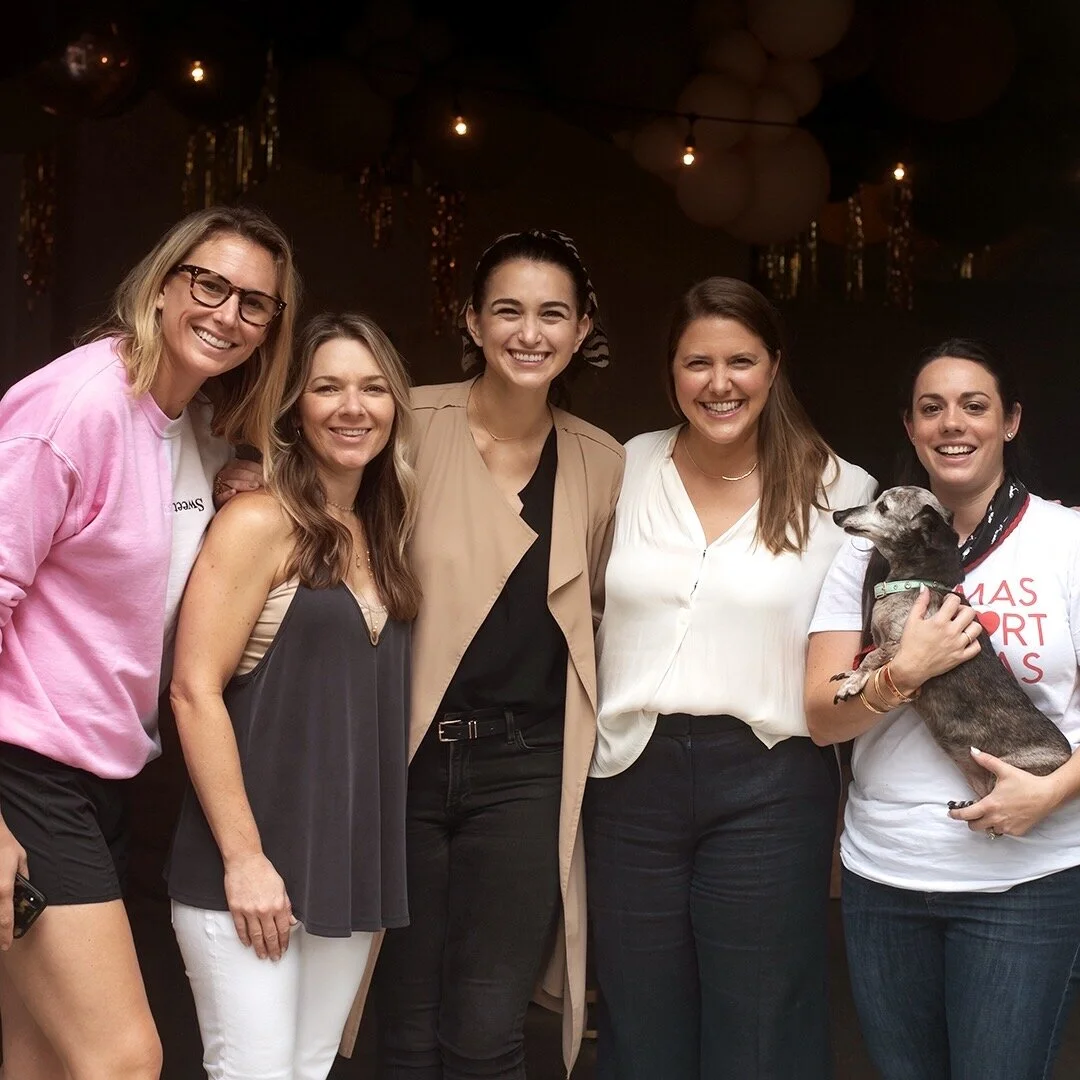Danielle Dobson and Anna McKay with some friends at Anna’s baby shower.
I’m thrilled to be surrounded by many women who inspire me as leaders and entrepreneurs in their fields. Danielle Dobson is a good friend of mine that I met when we were both living in Beijing as expats. Our children were in the same play group together and we connected over our desire to succeed in both motherhood and business.
Danielle was one of many of the talented mothers that I looked up to in our playgroup. I learned all sorts of parenting tips from her during that time and the entire play group was full of super talented women who had paused their careers to move overseas with their spouses. We were all trying to figure out what we wanted to do when we returned to our home countries. The mothers in that play group were part of the inspiration for me to start Parents Pivot!
I’ve stayed in touch with Danielle, who has since started her own business called Code Conversations. She is full of wisdom, which she was gracious enough to share with me to pass along to the Parents Pivot community. In this first part of a four-part interview series, you can read along as Danielle and I chat about transitioning back to paid work. She opens up about the ups and downs of balancing motherhood and a career, and encourages others to not hide behind the masks we tend to put up.
Enjoy!
————
Anna: What was it like transitioning back to paid work for you?
Danielle: It was a challenge because at first, I didn't actually want to do it. I had to do it.
After a separation and divorce, I wanted to be financially independent and secure. But I still felt like my heart was in my old world, the stay at home mom world. I'd always had projects, and I'd always done things. I did personal training and wellness coaching on the side for a while. So, I was always educating myself and learning things. And I was involved in the kids’ school on the PTA. I was also involved in local sporting clubs in the health and wellbeing area, similar sort of core missions.
But you know, my experience of the workforce was the sort of ego-driven, short-term
world of financing, particularly engineering services. So, you know, big boys’ toys and machines, and all that sort of thing. And it all just seemed so short-term, and I felt returning to that sort
of view of the paid workforce, where it's all about shareholder wealth and increasing the wealth of the people at the top of the company, that’s all I saw with work. I didn't really see anything much more than I was getting from it at that time.
For me, the mission of raising healthy flourishing humans was important, and I didn't want to jeopardize that. I was stuck in this place where I didn't want to leave my old world and jump into the world of paid work. There was so much tension.
And then I conducted this research project. It was like I just wanted to understand people more to be able to coach them. I saw all these women who seemed to do both parenting and working well.
I had always put my heart and soul into my career, giving it 110%. And I didn't see how I could do that and parenting and feel like I was doing well at both. I decided to be a stay at home parent. That was always a big fear about going back into paid work—jeopardizing my role as a parent. And I didn't see a good enough reason to jeopardize it.
But then I started to see people who had great careers on paper, but who were also contributing to other people's lives through their leadership and through their impact in the workplace. And they were sharing how they became a better leader and a better person after being a parent and how it benefited them in the workplace. And I was like, “Whoa, I didn't know that this was possible in the workplace and maybe all this time I've been putting all my eggs in one basket."
That was the worst time because I felt like my contribution didn't really matter as a stay at home parent AND I wasn't in paid employment.
And then I tapped into this higher mission of sharing everything that all these women had been sharing with me through the interviews and helping others flourish, and just ditching the cape and dropping the Wonder Woman myth. Because I wanted to help them. I want to fix it, yesterday. So that became my mission.
The research project gave me a sense of professional contribution again, to something bigger. It's helped me become a better parent and a better leader because I’ve been using all this practice from leadership, from these people I’ve been interviewing, with my parenting. All these boundary conversations and tough conversations and shared missions and easy wins—all these really great best practices that women leaders who are lead parents are sharing with me, I've been using myself at home with the boys. And I’ve been experimenting with it and sharing it with others.
I'm looking at all the similarities between parenting and leadership and how they actually work well together in parallel, rather than being separate parts of our world. If we look at them differently, like they're part of a big circle, like a big part of who we are, then we're not juggling all these balls. We're not straddling two worlds like a big juggling act. We actually have an opportunity to step into a new world, bringing everything with us. We’re in charge, we’re writing our own code.
Anna: It’s like we're being our whole selves. And as long as we're being who we are, we just need to show up like that everywhere.
Danielle: No shields, no masks. It takes energy to keep up 2 separate personas. But if you are uniquely who you are in all your spaces and all your roles, then you are spending less energy trying to be someone who you are not and you bring your strengths to all aspects of your life.
————
This is a 4-part interview series with Anna McKay, Founder of Parent’s Pivot and Danielle Dobson of Code Conversations. If you are interested in learning more about how you can successfully pivot to paid work, contact Anna today.









